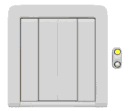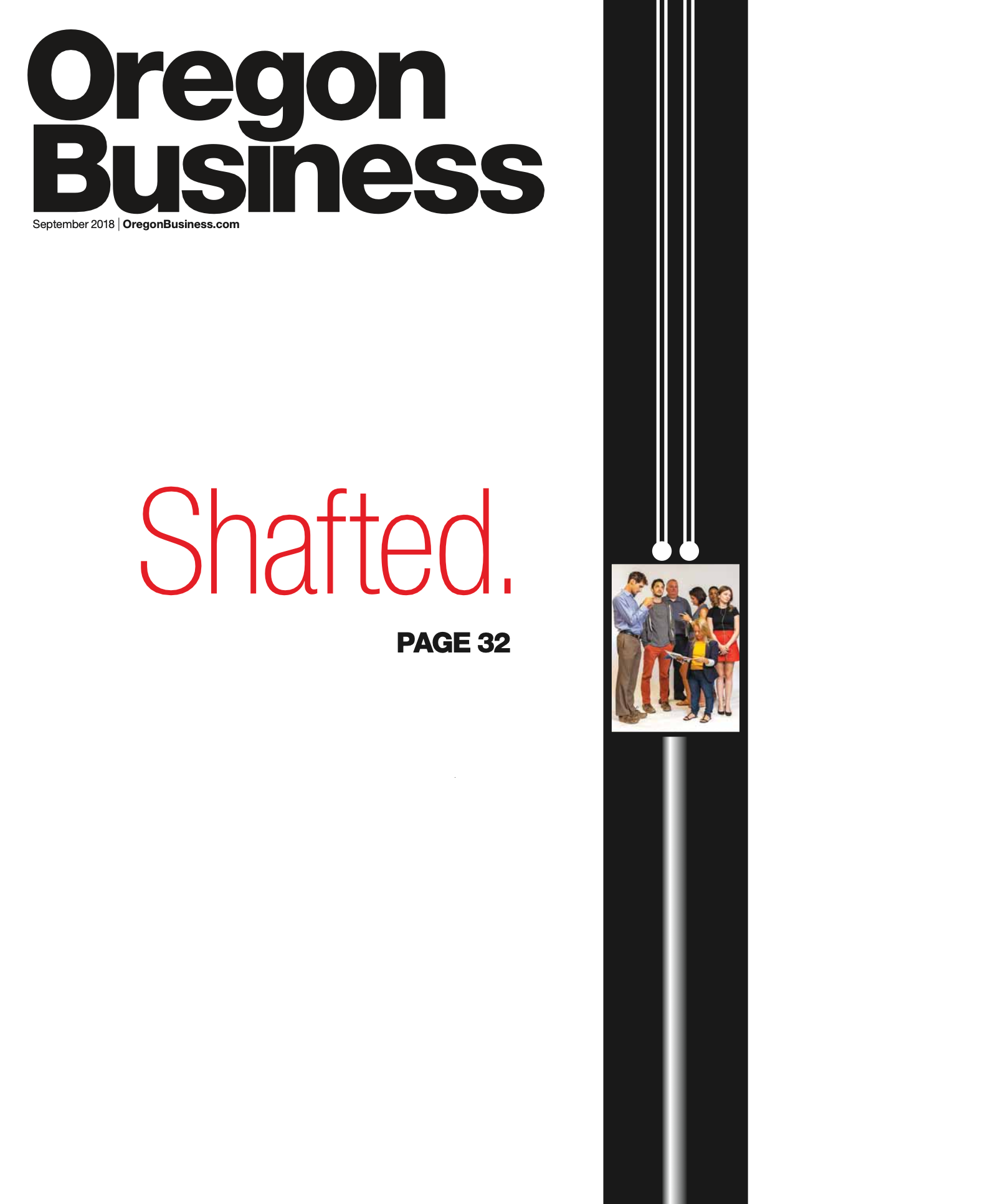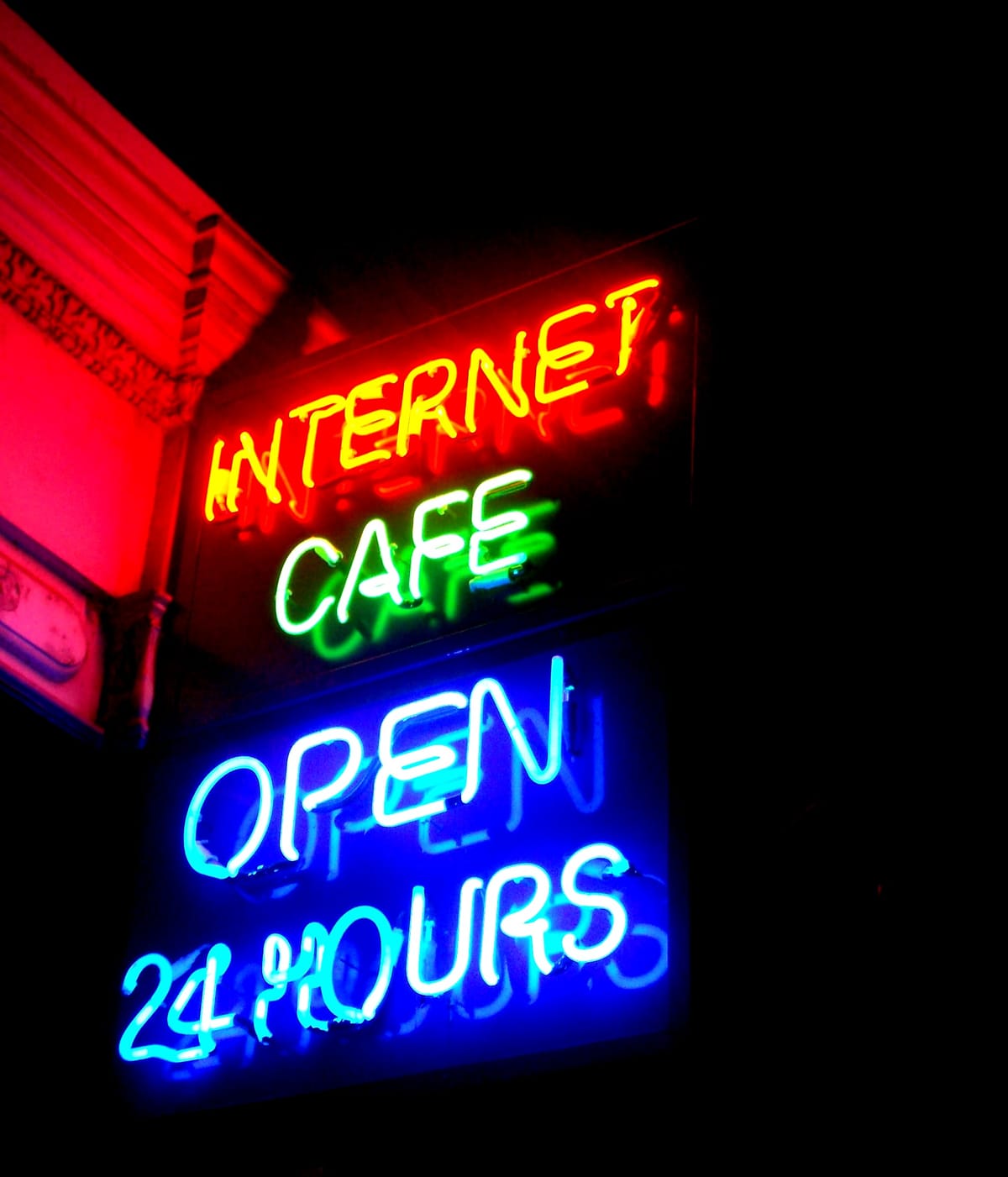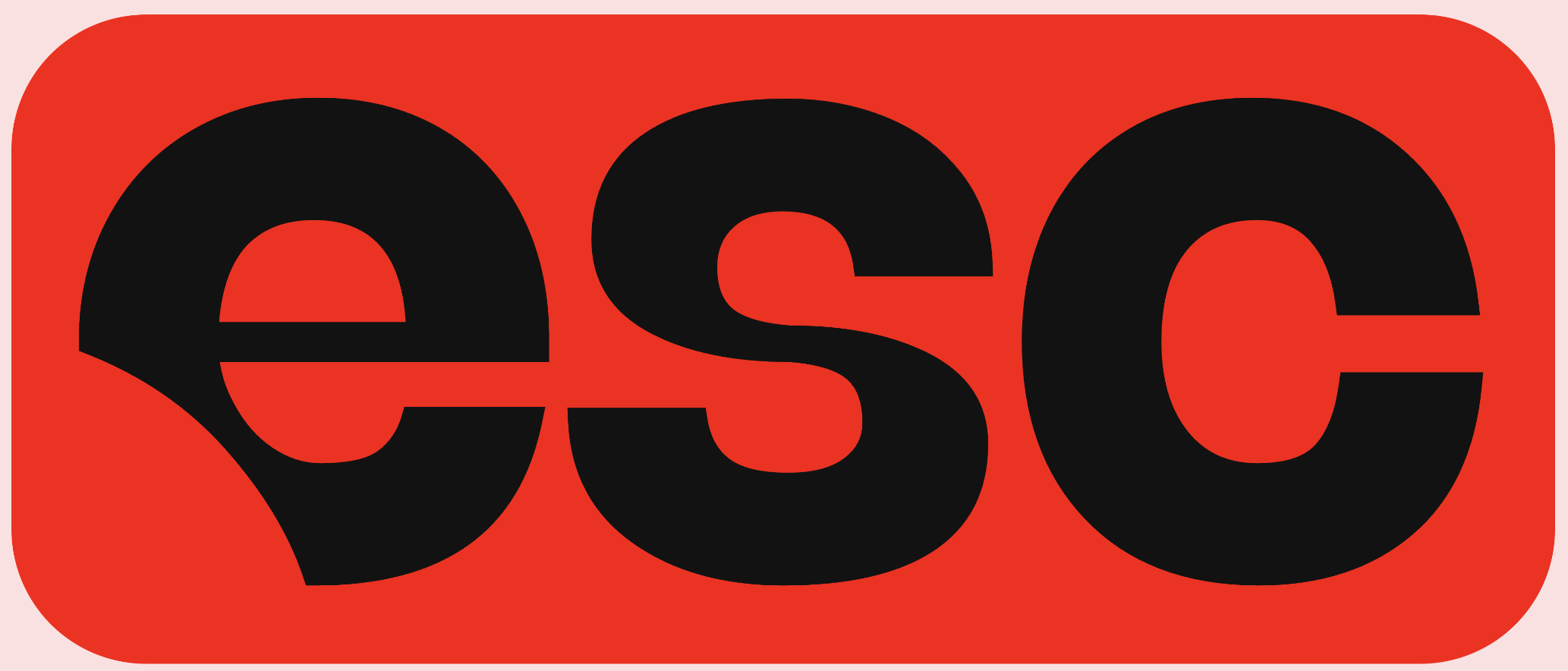What getting trapped in an elevator teaches us about the state of media
Concerned by journalism’s decline and the déjà vu discourse around it? This week, I recap a year of meta media headlines and connect that to the psychological toll of watching your industry collapse. It’s also a meditation on a magazine that taught me the business, which just died without a word.

Last week’s letter to young writers about the death of freelance journalism struck quite a chord, and not only among freelancers. In fact, I was not expecting the response it’s gotten in my inbox, by far the most “replied to” long-form piece mailed to readers of ESC KEY .CO. What follows is a companion guide to the state of media: part industry analysis, part personal reckoning, part refusal to pretend everything is fine.
I’ll be honest: I’ve been meta exhausted, that is, fatigued by the state of the discourse around the state of the media. It’s been on my mind a lot lately for a few reasons (including informing my move toward co-founding a new worker-owned media outlet, which soft-launched this month, as I wrote in the November 8 briefing). The discourse is too often either nihilistic doomerism or pollyannaish denialism.
Maybe my working-class mind makes me impatient with people who do not focus on the practical realities. Simply put: the world needs more working writers who aren’t rich, period. But I’ve found bringing a class-based, pragmatic and candid analysis to creative work makes some people uncomfortable.
You know what else makes people uncomfortable? Getting trapped in an elevator. Let me briefly contextualize that clickbait-y headline. I actually began drafting this week’s essay before the letter that hit some nerves. The reason is, the magazine that taught me this business recently laid off its remaining editorial staff. There wasn't even a headline. And in that silence, I began digging back through some work I did for the publication and rediscovered a cover story about elevator entrapment.
Indeed, that investigative article about elevators— and the shadowy industry my reporting revealed back then — started to feel like a sad metaphor for what it’s like working in media right now.
Therefore, for the latest installment of the experimental BTS @ ESC series, I remix the typical structure of our TL;DR Briefing for an extra deep dive into the state of discourse around media work.
And, of course, we still leave you with something to talk about at your next power lunch: what if instead of giving up, we fight for a different system? I suspect that will resonate whether you’re a curious reader or a disgruntled media worker feeling, well, shafted.

The thing is:
Getting stuck in an elevator is scary. So is the state of working in the media. I know a lot of journalists — and loads of creative workers in this economy — sometimes feel like they have the autonomy of someone trapped inside an elevator dangling by a fraying cable.
It’s to the point that the bad news in our field comes at such a pace that you can forget just how many bad things happened last month. Recently, I was in a pretty good mood, so I went back through all the articles I’ve bookmarked this year about publications folding, the defunding of public media and the impact that “AI” search is having on publishers’ traffic.
And, truly, you only need to glance at the media made for media makers — the meta journalism about journalism — to see how dark the times are. And I quote: “‘Festering, 20-year-old problem’ looms larger than ever.” “U.S. starves its public media.” “An alarming number of independent publishers and small chains closed.” “Journalism needs government funding to survive.” “What do we lose when Black women in journalism disappear? Everything.” There’s even the ever-entertaining newsletter Laid Off by Melanie Ehrenkranz, who has interviewed everyone from Aiyana Ishmael, the laid off style editor at Teen Vogue, to Nick Norlen, the laid-off senior editor at Dictionary.com (who has launched his own magazine). That is a small, random sample of headlines from my bookmarks.
But together, they gesture toward the predominant view in the field: journalism’s decline has only accelerated throughout 2025. And we’re not talking enough about what that means for the voices we’re losing as a result. And as we saw yet again with recent Condé Nast and CBS News layoffs, it’s disproportionately harming journalists of color, women and young journalists (“there are no longer any Black women working at Teen Vogue,” the publication's former politics editor Lex McMenamin posted on Bluesky).
“The numbers reflect what’s evident in newsrooms — continued cuts, shrinking staffs, and increasing strain on the journalists who remain.”
—Nick Mathews, University of Missouri
Journalism’s decline is not a new trend. In 2022, for instance, research concluded that two newspapers in the United States shut down per week, as The Washington Post reported then. But every year since, it seems to get worse. My best prediction for media trends in 2026? That it, too, will be worse than 2025, largely excluding the bright spots here and there in independent media and what many are now terming “creator journalism.” Indeed, one-third of journalists are content creators, according to a recent Muck Rack study, a stat that speaks to an opportunity as much as it underscores how many stable, unionized gigs we’ve lost.
In March, Chris Mooney — a Pulitzer-winning reporter on climate change, science and the environment — dug into U.S. newspaper industry data from the Bureau of Labor Statistics. Mooney wrote: “Back in the late 1990s, when I was a college kid, I was already committed to pursuing a career as a writer. I was also starting to view journalism as a cool, glamorous field that I wanted to be a part of.”
Back then, there were more than 400,000 journalism jobs, Bureau data revealed. By the start of 2025, the official figure was 86,000.
“The change over my roughly 25-year career is incredible,” he wrote. Tellingly, this was Mooney’s first substantive post on his Substack-hosted newsletter, ReportEarth.
Mooney added this commentary from a professor of journalism at the University of Missouri:
“The numbers reflect what’s evident in newsrooms — continued cuts, shrinking staffs, and increasing strain on the journalists who remain,” Nick Mathews who focuses on local news and its challenges, told me in an email. “As for whether this decline will slow, that’s harder to predict, but the pressures on local news remain significant.”
In many ways, we’ve not grappled with the psychological impacts that this has on everyone with any part of a toe left in this industry, from dying local papers through to the biggest publishers on the planet. This is on top of what already ranks among the most stressful jobs one can pursue.

The thing about that is:
There’s a need for a kind of meta service journalism to meet this moment. Service journalism is trade lingo for “news you can use” — practical, advice and educational content. And there is an emerging sub-genre, which why not coin a label for it? Let’s call it dystopian meta service journalism.
One compelling example of dystopian meta service journalism is titled “Coping with media layoffs” by Katherine Reynolds Lewis in Nieman Reports, a publication of the Nieman Foundation for Journalism at Harvard University. “Unfortunately, the news business continues to decline with no signs of abating,” Lewis wrote in April. “Some corporate owners seem to have adopted the strategy of laying off experienced workers to save a few bucks, then immediately seeking to replace them with cheaper, newer employees or contractors. For those of us working in this dystopian environment, layoffs are the new normal.” The article then offered a to-do list to help any currently employed journalist prepare for that inevitability.
Since “news organizations no longer disclose their employees’ demographic data to researchers who compile that information,” Lewis’s organization, the Institute for Independent Journalists, started asking laid-off journalists directly, as she wrote in the Columbia Journalism Review (CJR). The first headline finding in the responses from 176 laid off journalists, published last year in CJR, is that women and people of color were disproportionately represented.
“For those of us working in this dystopian environment, layoffs are the new normal.”
—Katherine Reynolds Lewis, Institute for Independent Journalists
When Lewis looked further into the responses, and interviewed journalists for her reporting, she more closely glimpsed the collective psyche in the field. As she wrote in CJR:
Indeed, every journalist interviewed for this story questioned whether they will have a long-term career in the field. Because many journalists pursue the profession from a sense of calling, leaving requires rethinking how we find purpose, in addition to the mechanics of presenting yourself as a valuable hire to an employer in a related industry.
Clearly, the field isn’t the only thing in crisis. Pondering whether you abandon your “sense of calling” is leading many journalists to a personal sense of crisis, too, the responses to the report make clear.
Like this local news reporter:
“I’ve been asking myself the question, do I want to return to journalism in any shape, way or capacity, and even after almost a year, I haven’t gotten an answer,” said Sarah Belle Lin, 30, who lost her job reporting local news for amNewYork in October 2023. “I wish to see the industry blossom and thrive, and see more women, more people of color and queer folks enter the space. So I don’t feel I’ve lost faith in media, but I have been losing all my hope for how the industry is structured and the business model.”
And this copyeditor:
“The layoff plunged me into a personal, professional, and spiritual crisis. I have been diagnosed with major depressive disorder,” said Beth, 43, a Midwestern copy editor laid off in summer 2023.
And this producer:
“The two months after the layoff, I honestly remember doing nothing. I was just shocked. It’s a little scary that there’s so much competition out there, so many people that are awesome at what they do,” said Janice Llamoca, 37, who lost her job as senior producer at VICE Audio in April 2023. “Every time I see journalism news cuts, all that rich storytelling is getting lost. Our role was to put a face to news.”

This year, when publication after publication has folded or laid off large shares of their newsrooms, my social media feeds have transformed momentarily into a collective expression of grief. Yes, that's because I am connected with a lot of media workers — and the way this news feels is collective. I was not laid off at Teen Vogue, but as a journalist, I felt a sense of loss; arguably any journalist feels the same when they see the layoffs in every corner of our ever-shrinking field. It’s not only a reminder of your own precarious position in the industry; it feels like part of your own future is dying; that sense of calling, as the Society of Professional Journalists’ Code of Ethics puts in some lofty wording: “public enlightenment is the forerunner of justice.” We mourn lost purpose, lost trust, lost institutional memory, lost public-spirited ambition. It’s a sense of loss people outside media work can’t exactly relate to. It’s a toxic relationship.
But I know some readers feel the sense of loss, too. As a reader, I recall the sense of loss I felt when I heard Pitchfork was being folded into GQ, for instance, or when Bitch Magazine announced it was shutting down, among too many other examples. It’s why I was thrilled to follow several Pitchfork staff over to Hearing Things, and one month ago to see The Flytrap announcing they’d struck up a partnership with Bitch to republish select posts from the magazine’s extensive archive of independent feminist media.
These moments of potential — the worker-owned collectives popping up, the niche media making a return in unexpected ways across the blogosphere, the newsletters leaving Substack and thriving beyond the walled garden — offer some hope.
“Built into Nieman Lab’s mission is a commitment to be ‘fundamentally optimistic.’ It is challenging to read Medill’s 2025 State of Local News Report and hold onto that optimism.”
—Sophie Culpepper, Nieman Lab
It’s in my nature to want to focus on those moments of hope. But in doing so, let’s also not lose sight of the gaps. And the gaps are growing.
“Built into Nieman Lab’s mission is a commitment to be ‘fundamentally optimistic.’ It is challenging to read Medill’s 2025 State of Local News Report and hold onto that optimism,” Sophie Culpepper reported for Nieman Lab, where she is a staff writer. She was also previously the co-founder of the hyperlocal Lexington Observer. The report she refers to found downward trends for almost any meaningful metric from the collapse in the total number of publications to the ever-declining readership — yes, even digital readership.
Professor Tim Franklin wrote in the State of Local News report’s intro:
Digital news sites don’t come close to replacing the number of newspapers and journalism jobs being lost. And the digital news providers are almost entirely concentrated in metro areas, leaving vast swaths of the country with little to no access to local news.

Journalists seizing the means of production, so to speak, have a chance to prove that independent, worker-owned models for media can pay off in the long-term. Maybe even scaling to fill in some of the void left by what we’ve lost? It remains an open question, but there are many positive signals.
Yet as the Medill report found, the areas served by upstart digital and local operations are almost all in higher-earning regions or serving higher-earning individuals in specific niches.
It’s important to focus on the gaps not covered by the growing newsletter economy, the beats not covered by worker-owned collectives — not to prove why the independent model can’t work; rather, it’s to compel us to understand how we can revitalize the news deserts. And there are many individuals and organizations working on this such as Rebuild Local News, whose co-founder Steven Waldman was quoted in the aforementioned Nieman Lab article, warning: “We’re losing the race against time.”
“If we allow this to continue — if media continues to shrink quietly, beat by beat, region by region — we’ll end up with a citizenry that’s less informed and less represented.”
This decline of media isn’t only about fewer jobs for journalists. It means fewer watchdogs, fewer storytellers, fewer chroniclers of injustice, nuance and complexity.
If we allow this to continue — if media continues to shrink quietly, beat by beat, region by region — we’ll end up with a citizenry that’s less informed and less represented.
It calls to my mind the news deserts in the Appalachian Mountains, where I grew up — and where hardly anyone is employed as a full-time journalist any more.
As a child, my late great grandmother, who had only completed an eighth-grade education, would sit at her kitchen table every morning with a red pen and mark up the grammatical errors in the Cumberland Times-News. She was born to be a copyeditor. If she could only see the shell of a paper today.
Nobody back in my corner of coal country has yet started a hyperlocal newsletter (but please do; I’ll be honored to be your first subscriber). In these places of generational poverty, the loss is acutely felt.

Where things get interesting:
If this all feels like a meta read on meta journalism, it’s, in part, because I’ve been feeling a bit meta about my whole career for a few reasons. One is that the regional magazine where my career took off was effectively killed a few weeks ago when it laid off most of its editorial staff.
It’s not the first time a publication or vertical I’ve worked on has been folded or significantly reduced. (Indeed, that’s happened a few times this year.) But this one hits especially close to my roots, as it was the magazine that taught me so much about the business of media.
There hasn't even been so much as a headline about it, only LinkedIn posts from the editors about the last issues, the staff photographer sharing the final covers, and the personal requests for connections and support.
Here, for instance, is me on the cover of Oregon Business magazine. I volunteered to be the model for an article about eating out, which I did not write but was happy to volunteer for because that meant I got to eat a free sandwich — anyway, who doesn’t enjoy eating out:

The lack of any coverage is not that surprising when you consider how the magazine hardly had a team left in its final years. (Respect to the last-remaining editorial staff, who turned out magazines with hardly any resources.)
But for decades, Oregon Business magazine was a powerful publication and a platform for many award-winning writers. The publishing company behind the magazine, MEDIAmerica, included Oregon media icon Win McCormack among its owners. McCormack is perhaps better known for Tin House as well as for purchasing The New Republic in 2016 from Chris Hughes, the Facebook co-founder who infamously acquired a majority stake in the magazine in 2012 and failed to do much good with it.
But as a result of cut after cut, Oregon Business magazine’s prominence in regional discourses had faded year over year — not due to the skills of the skeletal staff but management that did not seem to know how to effectively run a media company in this new era (or, at least, that’s the consensus from the laid-off staffers I’ve engaged with since then).
“Shortly after starting the job, I told a friend that I'd joined the media at the most depressing time possible.”
I am not here to eulogize a magazine that had already begun its decline by the time my name was on the masthead. I got my start there as a project manager and writer tasked with launching a branded journalism division, which was mostly me selling, writing and promoting sponsored content, though we didn’t call it that. Sponcon had been a point of contention with the prior editor, who protested the growing percentage of pages dedicated to what it promoted as “brand stories.” And here I was to fill even more of the pages in the book with brand stories. Shortly after starting the job, I told a friend that I felt like I had joined the media at the most depressing time possible. (And yet, here we are.)
But I hustled like my rent depended on the commissions (it did), and it's the only time, in fact, my writing ever earned me commissions. I gained confidence talking to strangers and lost a little bit of my rejection sensitivity (underscore: a little). I blazed through sales goals. I sold so many stories, including many sponsored by the leading economic, social impact and cultural organizations in the Pacific Northwest. I tried to make “brand stories” actually interesting to read, even getting the governor interviewed for one sponsored article paid for by a cultural non-profit. But in retrospect, I can say I started to feel like Lena Dunham’s character did on the HBO show “Girls,” when she got a job writing sponcon for GQ. I felt like a fake journalist, which I kind of was.
Thankfully, I wasn’t doing brand stories for too long. Soon the work I did led to a proper editorial role, which then led to a few promotions. By the time I left, I was the senior editor. That’s why I don’t tell the first part of the story very often: how I came into media was itself a sign of media’s bad times. I knew then I was climbing the mast of a sinking vessel, so I had been preparing to jump ship.

After several years in editorial leadership, I took the leap to self-employment — contracting for Vice, The Washington Post, various Condé Nast titles; an experimental run as the co-founder of a media company; and lots of client work as a content strategist. But I stayed on as a contributing editor at MEDIAmerica, and I occasionally wrote for Oregon Business magazine, too.
As it so happened, the September 2018 issue cover story for Oregon Business magazine was a strange one I wrote — it was, indeed, an investigative feature about elevator entrapments reaching a crisis level in the state:

It’s one of those features you might not put in your portfolio, but the characters you meet when reporting it never quite leave your imagination. What started as a bit of an enterprise reporting side project — I’d been hearing more anecdotal accounts about friends and colleagues getting trapped in elevators — shifted with one interview. A source told me, “The running joke with boots-on-the-ground folks is that over the last 20 years, it’s gone from preventive maintenance to call-back maintenance to entrapment maintenance.” Entrapment maintenance?! I did not like the sound of that.
I quickly learned that the corporate consolidation that happened in the elevator world meant most people were afraid to speak on the record.
My reporting spiraled into a maze of public information requests. I learned that emergency calls from elevators had skyrocketed, and so I dug deeper into an industry without as many regulations as you might hope to see. I had off-the-record calls with shadowy figures. Interviews with everyone from a construction manager to a professor explaining how the history of the elevator is the history of urbanism, in many respects. It showed me how a small number of companies hold considerable power in the global construction landscape. (Once upon a time, cities had local elevator manufacturers, if you can believe it.) Looking into a recent lawsuit about a heart attack provoked by a dramatic elevator malfunction gave me a narrative hook (and a surprising kicker; spoiler — the source got stuck in another elevator at their new office building).
It wasn’t only about entrapment itself; this was a time period when Portlanders would joke that the state bird should be the crane. Portland had the most cranes in any U.S. city for a while. And the power of elevator companies to almost single-handedly dictate construction schedules spoke to the oligarchic trends in all areas of the corporate world. Elevators are proxies for wealth inequality as gateways to vertical gated communities; elevators are a metaphor for entrepreneurial ambition; “it’s the only way up — and the only way down,” is a sentence my editor let me slide in.
I recently reread a PDF I’ve saved from that issue of Oregon Business, and it occurred to me how elevator entrapment is how this whole moment feels. We are trapped aboard an aging cab in the shaft and stuck between floors with no easy way out, so to speak. We worry the cables may be fraying. The maintenance has been deferred, and now we're in crisis.
It’s weird to say that niche yet rigorously investigative reporting about elevator entrapment won’t happen without independent and regional media, though if you read the full article I suspect you might want more of that kind of journalism, especially if you’re claustrophobic.
But swap the elevator accountability journalism out for something else — say, democracy itself, as journalists often like to cite — and you might see the point more vividly.

The thing to talk about over your next power lunch:
In early October, I was back in Portland, Oregon, hanging out with several journalist friends who had mostly left the field. One night, a few of us met at a dive bar, and I asked the bearded bartender if I could pay for a pint with cash. He smiled and nodded, “Of course! Around here, we prefer the old ways.” I sensed his enthusiasm. I couldn’t admit to him that I rarely carry cash.
But I do empathize with the sentiment — to the degree that I do worry that the kind of meta journalism I’m engaging in right now often amounts to saying the same thing: “we prefer the old ways.”
Yes, in some ways, there’s good reason to re-embrace certain “old ways,” but in a new light.
Take print. In an era of platform fragmentation and screen fatigue, the “old ways” of print are a refreshing antidote to the terminally online careers many of us lead. In June, for instance, I was at a sold-out live magazine event in Shoreditch hosted by the expertly curated mystery magazine subscription, Stack. At the event, the Substack-hosted Vittles Magazine made the leap from newsletter economy into indie publishing with their first print issue, a feast for the eyes. Many young people today increasingly prefer those particular “old ways,” too.
It’s hard to make sweeping claims about the state of journalism, then, because even as the legacy model fades, independent upstarts are showing different ways forward. That’s one of my takeaways from a long-form essay penned by Steve Watson, Stack’s founder, titled “The real death of print.” (Full disclosure: Watson generously mailed me a copy of the essay in zine format, which I read this past summer with a few pints at my local — as it should be.) He argues “the thing that has died here is the business model of the glossy magazines that emerged around 60 years ago, burned brightly for a few decades and which are now smouldering out.”
The same could be said for newspapers, too, where those old ways are no more. They faded for a host of reasons, chiefly the way targeted social and search advertising disrupted the print model. The more recent disruptions of “AI Overviews,” the recession in social media engagement and the walled-garden platforms turning against outbound links have only made the myriad problems worse.
To be sure, Watson’s focus is on magazines — beautiful and surprising and sometimes hilarious magazines. And he’s rather bullish about the future of these beauties, which he mails to thousands of subscribers around the world every month. He wrote in his essay:
In many ways, there has never been a better time to publish independent magazines. The simple, page flipping user interface of a print magazine is just as deeply embedded in our culture as it has ever been, and if anything it has taken on an extra level of value specifically because it’s not on a screen.

Print is just one channel, of course. There are many examples of reader-backed media thriving across formats.
If you want to get even more meta, there are many stellar newsletters about newsletters; creator journalists making content about being a creator journalist; new media about this new media landscape. Some of it might make your eyes roll — as if the best gig is selling other people on new ways to collect crumbs from the table. And for many veterans, I’d say that cynicism is partly earned.
But there are some good eggs. For instance, I find myself feeling less trapped in an elevator alone when I read the work of writers such as Liz Kelly Nelson and Lex Roman’s Project C (a few months ago, Roman and Nelson, as they say, got “newsletter married” when Roman merged their newsletter, Journalists Pay Themselves, with Project C). Read them and you see that there’s never been a better time to launch something of your own. Even the tech infrastructure around doing something like this has matured significantly in recent years, lowering the barrier to entry.
It also won’t be easy — like the often-shirtless founder of a new gay magazine, Tax, has said in his series of “oversharing” TikToks about launching in print: well, his magazine is running into the red. Maybe the shirtless guys filling his pages will move units. And look, we need more gay magazines. We need more queer smut. Yes.
But, equally, a lot of good journalists are bad at building businesses or marketing themselves, which are, in essence, additional skills they rarely teach in journalism school. Some journalists would rather leave the field than learn those skills. So when laid off or burnt out from the impossibility of earning an income as full-time freelance journalists, they find themselves with a choice: reinvent themselves for journalism’s new reality or retrain for another kind of work.
I made this point last week in my essay about the death of freelance journalism, yet another example of dystopian meta service journalism, which struck a nerve in my inbox and social feed. I was a bit overwhelmed by the response from both current and former freelance journalists who expressed how painfully true it felt. It is, I hope, a cathartic read. But it left concerned readers with many questions I’m also left grappling with.
No, building an audience does not happen overnight. Monetizing your work isn’t impossible but it requires learning new ways of conducting business. And building reader revenue around actual journalism can often be a multi-year slog for those who didn’t exit legacy media institutions with an audience in tow. (Because legacy media people continue to be privileged on Substack’s leaderboards.)
“Advertising revenue funded the journalism industry of past generations. Tech figured out how to extract most of that revenue.”
—Hamilton Nolan in the Columbia Journalism Review
Some argue this unbundling of magazines and newspapers is not a suitable replacement for the model that’s on the way out. I admit they have a point even as I direct my own hopeful self toward such potential.
A few months ago, such discourse once again bubbled to the top of my feed: Rebuild Local News’ Matt Pearce shared an article on LinkedIn by Hamilton Nolan in the Columbia Journalism Review. Pearce quoted a meaty paragraph from Nolan, who wrote:
If we want to see a robust level of news reporting exist in this nation — comparable to what we had in the twentieth century — we will need public funding for journalism. Not the paltry $1.1 billion that Congress just yanked from public broadcasting, but tens of billions of dollars, enough to prop up the ubiquitous local and regional reporting that is vital to a functioning democracy. You can arrive at this conclusion not by ideology, but by a straightforward process of elimination. Advertising revenue funded the journalism industry of past generations. Tech platforms like Google and Facebook figured out how to extract most of that revenue, leaving media companies in need of other funding streams. Nonprofit news outlets? There are great ones, but there is not enough donor money to go around. Subscriptions? Ditto. My Substack is earning me a living, but not the hundred other reporters I worked with in my last newsroom. The government is the funder of last resort. Unless journalism gets public funding, the profession will continue to decline for the foreseeable future. Anything else, I’m sorry to say, is magical thinking.
On one hand, I fear Nolan is correct. And on the other, I also laughing-face replied to Roman’s comment on this post: “I don’t know how much we want to rely on the government to fund the thing that holds them accountable but I’m paying attention.”
Indeed, it’s a very small number of countries that have correctly identified a flourishing press as a prerequisite for an informed citizenry. This is the 20th century rationale for public television, after all — the beleaguered BBC, for instance, is funded by a small TV license fee, which has been a target of Tory governments here for decades.
Policymakers in Denmark have gone further to directly subsidize private news publishers, as Rasmus Kleis Nielsen wrote this month in Nieman Lab:
A country with a population of 6 million provides about DKK 500m (around $80 million) in direct cash subsidies for private news media every year. [...] In total, Denmark spends about 0.2% of its GDP on supporting the media through direct subsidies, indirect subsidies, and investment in public service.
Danes admit even that’s not enough.
While media policy wonks outside Scandinavia can drool over Denmark as a model for what other countries may explore, the fact remains that we, journalists and readers, mostly live in a world where those policies are a pipe dream, at least when compared with the other legislative priorities that need addressed in the short term. A skeptic might find it hard to imagine a Democratic-led government in the United States passing any such thing, especially when those same legislators can’t agree on basic human rights such as healthcare and bodily autonomy. Supporting media is an urgent problem that has, for years, not been treated with the urgency it deserves.
That’s not to say we shouldn’t focus on advocating for Denmark-style funding of a free press, or even going further. (Tax rebates for media subscriptions?) But perhaps, borrowing from the ideas of mutual aid in anarchism and queer and trans communities, we start with the power we have in our corner of the world.

After last week’s column, a few readers reached out with essentially the same question phrased a few different ways: But what does the future actually look like?! Darlings, let me note: I was honored by ESC KEY .CO readers’ apparent faith in my clairvoyance.
The only thing I can say for sure is that we need to pluralize future, as there are ideally many futures of media. There are more desirable futures (e.g., supporting worker-owned media upstarts and collectives) and less desirable futures (e.g., letting media continue to be controlled and dominated by billionaires, squeezing working class journalists and creative professionals out of such fields).
“The question I’d ask is, what future would I want to go down having advocated for, even if it didn’t ‘win’?”
Is the system too rigged against us to win? I think that’s the wrong question. The one I’d rather ask is, what future would I want go down having advocated for, even if it didn’t “win”? Another way of saying, what side of media history do I want to be fighting on?
With this must come an acceptance of reality. In all the discourse around this stuff, I often hear an implied question: “Is our future really one where journalists have to become media companies of their own?” I’d argue that is, in fact, already our present, like it or not. We’re playing with the cards we’re dealt. Will I make it work? I don’t know, as I already pay my rent in several many ways.
Perhaps it’s my own sense of calling that’s compelled me to dedicate much of my time this year to firsthand experiments in various models. One such experiment is this very media outlet, which has already sucked more of my social life than I’d like to admit. Over the last few months, I madly concluded that operating one fledgling new media outlet wasn’t enough of a slog, so I co-founded another, which soft-launched in early November.
In other words, my take on this answer is a sentence I already published in last week’s column: “Frankly, I don’t even know what the next year of my career will look like.” But you can be sure, dear reader, you’ll hear about what happens in, ahem, my newsletter.

And one more long thing to read:
This BTS @ ESC essay is a companion to last week’s column about the death of freelance journalism:







